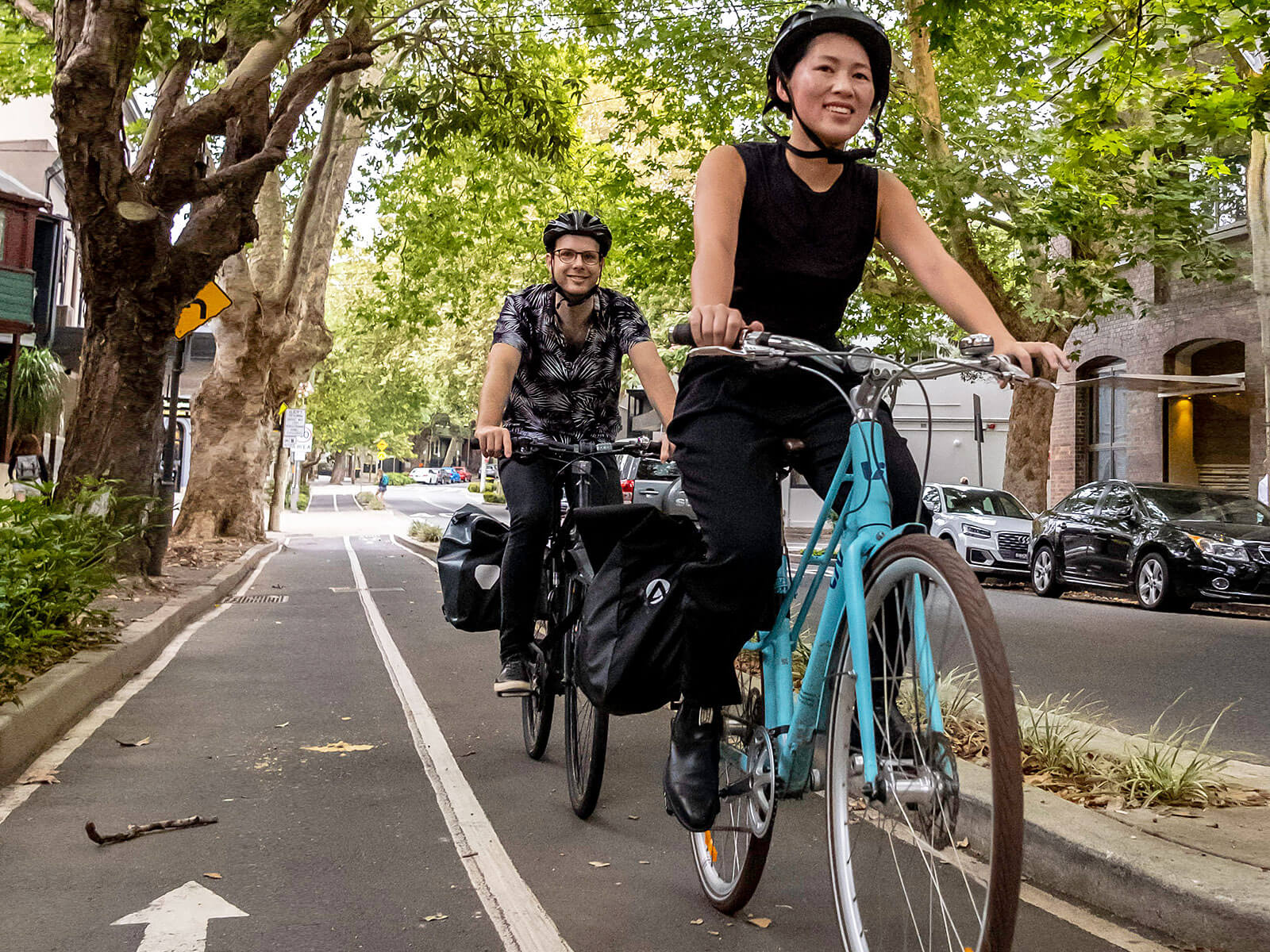By DANIEL LO SURDO
The inner-city has seen a boom in cycling use in the past two years.
The City of Sydney’s 2021 Active Transport Survey revealed that regular cycling has more than doubled since 2019, with more than half of regular cyclists beginning in the last two years.
State Member for Newtown Jenny Leong embraced the findings.
“It’s great to see that so many people living in the Newtown electorate have embraced walking and cycling at this time,” Ms Leong told City Hub.
“It shows that the community really appreciates the extra opportunities for walking and cycling that have become available during the pandemic and that people will take up options to cycle particularly when the infrastructure is in place.”
The City of Sydney has expansive cycling networks including Newtown’s Wilson and Lennox Street. Pop-up cycleways have continued to grow across the inner-city to encourage independent commuting patterns and free up space on public transport and roads.
Crunching the numbers
Data from the Active Transport Survey suggests that increased accessibility for cycling has been welcomed in the inner-city. 18 per cent of respondents owned a bike and used it at least once a month, an increase of 7 per cent from 2017. Those who don’t own a bicycle and are not interested in riding a bike accounted for 35 per cent of respondents, a 13 per cent decrease from figures four years ago.
Reasons for an uptick in regular cyclists, defined as those that own a bike and use it at least once a month, were dominated by two factors: a desire to be healthy (58 per cent of online respondents) and discovery of places/routes where it is good to ride (52 per cent).
The latter factor saw a 28 per cent spike from the 2017 survey, the largest of any option.
“[We] have always strongly called for state governments to properly fund local councils to be able to develop bike paths and accessible pedestrian footpaths,” Ms Leong said.
“Now that so many people are changing the way they get around, it’s absolutely crucial that the state government ensures that some of the temporary fixes can be turned into long term passive transport options.
“It is also critical that consideration is given to accessibility – there are so many areas where improvements need to be made to ensure our city is an inclusive one for all people to get around.”
Changes in cycling patterns have also been precipitated by the COVID-19 pandemic, whereby decreased patronage on public transport has behoved Sydneysiders to seek independent avenues of movement.
19 per cent of regular cyclists in the survey listed their uptick to measures implemented by their workplaces, with 16 per cent riding frequently as it is part of their job.
Patronage across state transport infrastructure is down approximately 90 per cent when compared to pre-pandemic levels, with many employees adjusting their commuting patterns to minimise their risk of infection and transmission.
Regular riders generally felt confident riding on the inner-city’s cycling network. 68 per cent rated themselves at least moderately confident, with 31 per cent as very confident. 6 per cent were not at all confident about riding in the inner-city. As part of the City of Sydney’s cycling map, each cycleway is described by its terrain and conditions, with off-road shared paths such as Victoria Park and separated off-road cycleways including Wilson Street signposted for cyclists to reference.
Ms Leong believes that inclusive structures are crucial for the continued strength of sustainable commuting in the inner city.
“Our … community is fortunate in that the area between suburbs and parks is not very large and therefore it’s easy for most people and families to get around to shop and access services either by walking or cycling,” Ms Leong said.
“But this can only happen when the infrastructure is in place to make this safe and accessible.”
Opening future avenues
Respondents that used their bicycle less than once a month were classified as infrequent riders. 76 per cent of infrequent riders were either moderately interested (52 per cent) or very interested (24 per cent) in riding more regularly.
Among infrequent riders, reasons for riding more often were led by fitness and leisure (58 per cent) and visiting parks/cycleways (53 per cent). Visiting parks and cycleways were up 10 per cent from 2017 while riding for fitness and leisure decreased 16 per cent from four years ago. Infrequent riders cycling to school or university also increased 10 per cent from 2017.
Factors discouraging more riding for infrequent riders were headlined by the danger of inner-city traffic (56 per cent), a lack of sufficient off-road pathways (45 per cent) and a failure to be comfortable in shoulder lanes near parked cars (42 per cent).
The NSW Government and City of Sydney Council’s city centre access strategy has worked to mitigate the risks of cycling in the inner-city and CBD. To create a safer environment for cyclists, speed limits in the city centre have been reduced to 40km/h and cycleway networks have grown to include both offroad and shared paths for commuters.
Council’s cycling strategy and action plan 2018-2030 is a key framework that has listed a target of 10 per cent of all trips in the city to be made by bicycle.
Pop-up cycleways were introduced as part of the response to the COVID-19 pandemic in 2020 and have been well-received by the inner-city community, with the network expected to expand in coming years.
April 25, 2024 |
Staff Writer
April 23, 2024 |
Staff Writer
April 19, 2024 |
Staff Writer
April 18, 2024 |
Staff Writer
April 12, 2024 |
Staff Writer
April 11, 2024 |
Staff Writer


